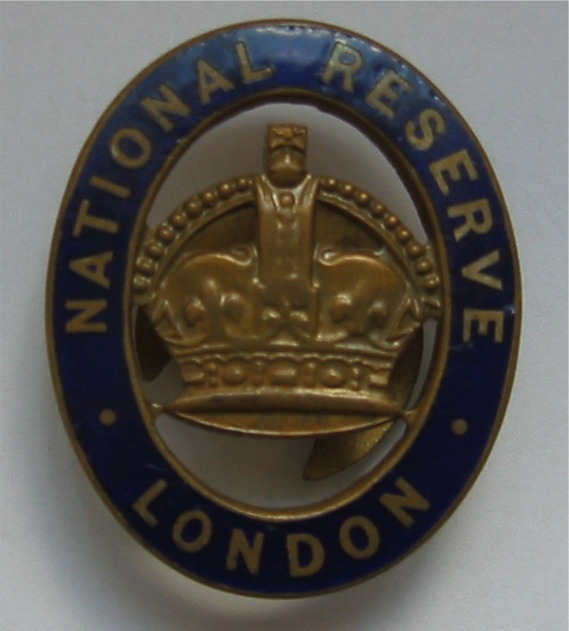The National Reserve was created prior to 1914 and was, in essence, a register
maintained by Territorial Force County Associations of all those who had
military experience, but who had no other reserve obligation. It was divided in
three classes;-
- I those under 42 in age;
- II officers and senior ranks under 55 and junior ranks under 50 for home service only;
- III those who were not medically fit for Classes I and II:
Its strength as at the 1st October 1913 was 215,000 all ranks. In October 1914, the National Reserve was formed
into Protection Companies, which were attached to existing Territorial Force battalions, for
the guarding of railways and other vulnerable points in Britain. That November,
all Class I and II men were ordered to present themselves for enlistment. In
March 1915 the Protection Companies became Supernumerary Companies of the Territorial
Force. In July
1915 there was a wide scale trawl of these companies to identify men capable of
marching 10 miles with a rifle and 150 rounds of ammunition. Those who were
medical Category A went to Service battalions, while Category C's were posted to
Provisional battalions. Category B men were formed into the 18th-24th Battalions of
the Rifle Brigade Territorial Force. These battalions were
sent to Egypt and India at the end of 1915 to replace Territorial Force units committed to the
Dardanelles and Mesopotamia. The remainder left in
Britain eventually formed the 25th Battalion Rifle Brigade Territorial Force and served as a
Garrison battalion at Falmouth. As for the Supernumerary Companies, they were
eventually formed into the Royal Defence Corps.
The badge pictured is from my own collection and is for London, there
were other National Reserve badges issued. The manufacturer of this
particular badge was J.R. Gaunt of London and the badge is numbered "RDNO
579118. |
 |
